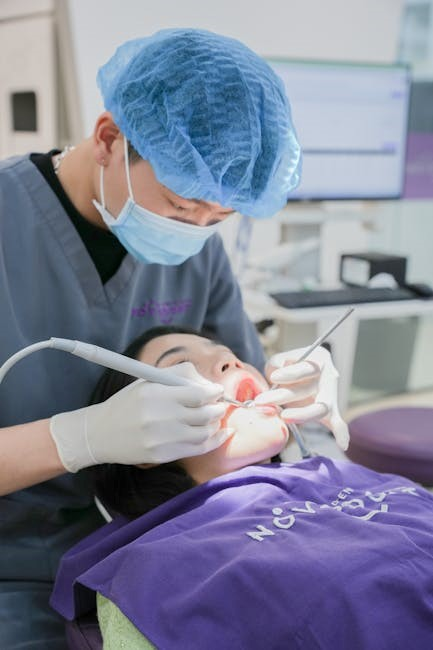The 2018 Subaru Outback Manual provides essential guidance for owners‚ covering features‚ maintenance‚ and troubleshooting. It includes repair manuals‚ service bulletins‚ and DIY tips for optimal performance.

1.1 Overview of the 2018 Subaru Outback
The 2018 Subaru Outback is a versatile mid-size crossover wagon known for its rugged design and all-weather capability. Available in trims like 2.5i‚ 2.5i Premium‚ 2.5i Limited‚ 2.5i Touring‚ 3.6R Limited‚ and 3.6R Touring‚ it offers a blend of comfort and practicality. Standard features include a rearview camera‚ adaptive lighting‚ electric tailgate‚ keyless entry‚ heated seats‚ and a navigation system. Optional upgrades like a Harman Kardon audio system enhance the driving experience. Under the hood‚ the Outback features a 2.5-liter boxer engine producing 175 hp or a 3.6-liter engine with 256 hp‚ both paired with a Lineartronic CVT and symmetrical all-wheel drive. Suspension improvements and noise-reduction measures make it quieter and smoother‚ while offering 35.5 cubic feet of cargo space‚ expandable to 73 cubic feet with the rear seats folded.
1.2 Importance of the Manual for Owners
The 2018 Subaru Outback manual is an essential resource for owners‚ providing detailed guidance on vehicle operation‚ maintenance‚ and troubleshooting. It helps owners understand the car’s features‚ optimize performance‚ and address issues promptly. The manual includes maintenance schedules‚ DIY tips‚ and repair procedures‚ empowering owners to care for their vehicle effectively. By following the manual‚ owners can ensure their Outback runs efficiently‚ reduce repair costs‚ and maintain its value. It also serves as a future reference for customizing settings or resolving common problems‚ making it indispensable for both new and experienced drivers.

Types of Manuals Available for the 2018 Subaru Outback
The 2018 Subaru Outback offers three key manuals: the Owner’s Manual‚ Repair Manual‚ and Service Bulletin. Each provides specific guidance for maintenance‚ repairs‚ and updates.
2.1 Owner’s Manual
The 2018 Subaru Outback Owner’s Manual is a comprehensive guide designed to help owners understand and utilize their vehicle’s features effectively. It covers essential information about the car’s operation‚ maintenance‚ and troubleshooting. The manual is available for various trim levels‚ including the 2.5i‚ 2.5i Premium‚ 2.5i Limited‚ 2.5i Touring‚ 3.6R Limited‚ and 3.6R Touring models. It includes details about standard features such as the rearview camera‚ adaptive lighting‚ and electric tailgate‚ as well as optional upgrades like the Harman Kardon audio system. The manual also provides maintenance schedules‚ DIY tips‚ and guidance for customizing settings. Owners can download the PDF version for free‚ making it easily accessible for reference. This resource ensures that drivers can maximize their vehicle’s performance and enjoy a seamless driving experience.
2;2 Repair Manual
The 2018 Subaru Outback Repair Manual is a detailed resource for diagnosing and fixing mechanical issues. It includes comprehensive diagrams and step-by-step instructions for repairs‚ ranging from simple tasks like replacing a light bulb to complex procedures such as engine removal. This manual is ideal for both professional mechanics and dedicated DIY enthusiasts. It features wiring diagrams and the latest service corrections up to March 2019‚ ensuring accuracy and reliability. Additionally‚ it includes the Body Repair Manual‚ which provides guidance for frame and body damage repairs. The repair manual is available as a free PDF download‚ making it accessible for anyone looking to maintain or repair their vehicle. It is a valuable tool for ensuring the longevity and optimal performance of the 2018 Subaru Outback.
2.3 Service Bulletin
The 2018 Subaru Outback Service Bulletin provides technical updates‚ recall notices‚ and diagnostic tips for maintaining optimal vehicle performance. Issued by Subaru‚ it ensures owners and technicians are informed about potential issues and solutions. The bulletin covers software updates‚ firmware improvements‚ and mechanical adjustments to enhance safety and functionality. It also includes guidance on troubleshooting common problems‚ such as navigation system glitches or infotainment responsiveness. Available for free download‚ the Service Bulletin is a crucial resource for anyone looking to keep their Outback in prime condition. It complements the Owner’s Manual and Repair Manual‚ offering targeted information to address specific concerns. Regularly reviewing the Service Bulletin helps owners stay proactive about their vehicle’s health and performance.

Features and Specifications of the 2018 Subaru Outback
The 2018 Subaru Outback features a rearview camera‚ adaptive lighting‚ and heated seats. Optional upgrades include a Harman Kardon system. It offers 35.5-73 cubic feet of cargo space with a 2.5L or 3.6L engine‚ both paired with CVT and all-wheel drive.
3.1 Standard Features
The 2018 Subaru Outback comes with a range of standard features designed for comfort and convenience. These include a rearview camera‚ adaptive lighting‚ and an electric tailgate for easy cargo access. Keyless entry and a heated steering wheel are also standard‚ along with heated front and rear seats for added warmth during colder months. The vehicle features a navigation system and laminated side glass to reduce road and wind noise‚ enhancing the overall driving experience. Additionally‚ the Outback offers 35.5 cubic feet of cargo space behind the rear seats‚ which expands to 73 cubic feet when the 60/40-split folding rear seats are folded down. These features make the Outback a versatile and practical choice for drivers seeking both functionality and comfort.
3.2 Optional Upgrades
The 2018 Subaru Outback offers several optional upgrades to enhance its functionality and luxury. A premium Harman Kardon audio system is available for superior sound quality‚ while a panoramic moonroof adds natural light and ventilation to the cabin. For advanced safety‚ the EyeSight Driver Assist Technology can be added‚ featuring adaptive cruise control and lane-keeping assist. Additionally‚ a power liftgate with memory height settings provides convenience for cargo handling. Optional 18-inch alloy wheels and exterior trim upgrades can also elevate the vehicle’s appearance. Inside‚ ventilated front seats offer enhanced comfort during warmer weather. These upgrades allow owners to tailor their Outback to their preferences‚ balancing practicality with premium features for a more personalized driving experience.
3.3 Engine and Performance
The 2018 Subaru Outback is powered by a 2.5-liter boxer engine‚ delivering 175 horsepower and 235 Nm of torque‚ or an optional 3.6-liter engine producing 256 horsepower. Both engines are paired with a Lineartronic CVT and Subaru’s Symmetrical All-Wheel Drive system‚ ensuring balanced power distribution and traction. The 2.5-liter model accelerates from 0 to 100 km/h in 10;2 seconds‚ with a top speed of 198 km/h. The 3.6-liter variant‚ available in the U.S.‚ offers enhanced performance for those seeking more power. The retuned power steering and suspension improvements provide sharper handling and a smoother ride‚ while the updated firmware enhances throttle response. These features make the Outback versatile for both daily driving and off-road adventures‚ combining efficiency and capability in a robust package.
3.4 Suspension and Handling Improvements
The 2018 Subaru Outback features significant suspension and handling upgrades‚ enhancing ride comfort and responsiveness. A redesigned suspension system with new shock absorbers reduces body roll and improves stability during cornering. The retuned power steering provides quicker and more precise feedback‚ making the vehicle more agile on both paved roads and off-road terrain. Thicker side windows and additional sound-absorbing materials contribute to a quieter cabin‚ while the updated variator chain minimizes noise from the engine. These improvements ensure a smoother ride and better control‚ making the Outback equally capable on city streets and rugged trails. The suspension enhancements‚ combined with Subaru’s Symmetrical All-Wheel Drive‚ deliver a balanced and confident driving experience.
Maintenance and Service Schedules
Regular maintenance is crucial for the 2018 Subaru Outback’s performance and longevity. The manual outlines schedules for oil changes‚ tire rotations‚ and fluid checks‚ ensuring optimal functionality and preventing issues.
4.1 Routine Maintenance Requirements
The 2018 Subaru Outback manual emphasizes regular maintenance to ensure optimal performance and longevity. Key routines include oil changes every 5‚000 to 7‚500 miles‚ tire rotations every 12‚000 miles‚ and brake inspections every 15‚000 miles. Fluid checks‚ such as coolant‚ transmission‚ and differential fluids‚ should be performed at specified intervals. The manual also recommends inspecting the air filter every 15‚000 miles and replacing it as needed. Proper maintenance schedules help prevent mechanical issues‚ improve fuel efficiency‚ and reduce emissions. Neglecting these routines can lead to decreased performance and potentially costly repairs. By following the manual’s guidelines‚ owners can ensure their Outback runs smoothly and maintains its reliability over time.

4;2 DIY Maintenance Tips
The 2018 Subaru Outback manual provides practical DIY maintenance tips to help owners keep their vehicle in top condition. Regular oil changes‚ tire pressure checks‚ and air filter inspections are simple tasks that can significantly improve performance. Owners can also learn to replace wiper blades‚ check battery terminals‚ and inspect belts for wear. These DIY tasks not only save money but also foster a deeper understanding of the vehicle. The manual guides users through each process with clear instructions and diagrams‚ making it easier for even novice owners to perform routine checks. By following these tips‚ drivers can ensure their Outback runs efficiently and reliably‚ while also extending its lifespan. DIY maintenance is a cost-effective way to maintain the vehicle’s health and prevent potential issues down the road.
4.3 Troubleshooting Common Issues
The 2018 Subaru Outback manual offers detailed troubleshooting guides to address common issues. Owners can identify problems such as dashboard warning lights‚ infotainment system glitches‚ or unusual noises. The manual provides step-by-step solutions for issues like faulty sensors‚ battery drain‚ or transmission concerns. For example‚ if the CVT warning light illuminates‚ the manual explains how to check fluid levels and scan for error codes. It also covers resetting systems‚ such as the tire pressure monitoring system‚ after rotations or replacements. By following the manual’s troubleshooting steps‚ owners can diagnose and resolve many issues independently‚ reducing the need for costly repairs. This section empowers drivers to address problems confidently‚ ensuring their Outback runs smoothly and efficiently. Regular troubleshooting can prevent minor issues from becoming major concerns‚ enhancing overall vehicle reliability and performance.

Software and Firmware Updates

The 2018 Subaru Outback manual details procedures for updating navigation and infotainment systems. Firmware updates enhance performance‚ improve gas pedal response‚ and refine system functionality for a smoother driving experience.
5.1 Navigation System Updates
The 2018 Subaru Outback manual provides detailed instructions for updating the navigation system. These updates ensure accurate mapping‚ improved voice command functionality‚ and enhanced system performance. Owners can download the latest maps and firmware via USB or through online platforms. The manual outlines step-by-step procedures for installing updates‚ ensuring seamless integration with the infotainment system. Regular updates are crucial for maintaining optimal navigation accuracy and accessing new features. The process is designed to be user-friendly‚ allowing drivers to keep their system up-to-date without professional assistance. By following the manual’s guidance‚ owners can enjoy a more intuitive and responsive navigation experience‚ enhancing their overall driving comfort and convenience.
5.2 Infotainment System Tips
The 2018 Subaru Outback manual offers valuable tips for optimizing the infotainment system. Owners can customize settings to personalize their driving experience‚ such as adjusting display preferences and setting up favorite shortcuts. Pairing smartphones via Bluetooth or USB ensures seamless connectivity for hands-free calls and music streaming. The manual also provides guidance on using voice commands for navigation and media control‚ enhancing safety and convenience. Additionally‚ tips for updating the system firmware and troubleshooting common issues are included. Regularly cleaning the touchscreen and ensuring proper software updates can maintain optimal performance. These tips help users maximize the functionality of the infotainment system‚ ensuring a more enjoyable and connected driving experience.
Getting Familiar with the 2018 Subaru Outback
The manual helps owners understand initial setup‚ customize settings‚ and interpret indicator lights‚ ensuring a smooth transition to enjoying the Outback’s features and capabilities.
6.1 Initial Setup and Configuration
The 2018 Subaru Outback Manual guides owners through the initial setup and configuration process‚ ensuring a seamless experience. Key steps include setting the clock‚ adjusting display settings‚ and configuring the push-button start. The manual also covers pairing devices for Bluetooth connectivity and initializing the navigation system. Customizing settings like driver preferences and technology features is made straightforward. Troubleshooting common issues during setup is also addressed‚ providing solutions for a smooth start. By following the manual‚ owners can personalize their Outback to meet their needs and preferences effectively.

6.2 Customizing Settings
The 2018 Subaru Outback Manual details how to customize settings for a personalized driving experience. Owners can adjust features like keyless entry‚ heated seats‚ and steering wheel preferences. The manual also explains how to tailor infotainment settings‚ such as Bluetooth device pairing and navigation system preferences. Customizing driver-assistance technologies‚ like adaptive cruise control and lane-keeping assist‚ is also covered. Additionally‚ the manual provides guidance on setting up the rearview camera and configuring the vehicle’s lighting and security systems. By following the manual‚ owners can easily personalize their Outback to suit their preferences‚ ensuring comfort‚ convenience‚ and optimal performance on the road.
6.3 Understanding Indicator Lights
The 2018 Subaru Outback Manual provides a detailed guide to understanding the various indicator lights on the dashboard. These lights are designed to inform the driver about the vehicle’s status‚ potential issues‚ or active safety features. The manual explains the meaning of each light‚ including warning lights for engine‚ oil‚ and battery issues‚ as well as indicators for systems like all-wheel drive and adaptive cruise control. It also covers how to respond when a light illuminates‚ whether it requires immediate attention or routine maintenance. By familiarizing yourself with these indicators‚ you can ensure safe and efficient operation of your Outback. The manual includes diagrams and descriptions to help you identify and interpret each light accurately.
Discontinuation of Manual Transmission
Subaru discontinued the 6-speed manual transmission for the 2018 Outback and Legacy models‚ replacing it with a CVT. This change is permanent and not reversible.
7.1 Implications for Drivers
The discontinuation of the manual transmission in the 2018 Subaru Outback impacts drivers who prefer precise control over gear shifts. The switch to a CVT (Continuously Variable Transmission) alters driving dynamics‚ potentially reducing the tactile experience for enthusiasts. While the CVT enhances fuel efficiency and simplifies operation‚ it may feel less engaging for those accustomed to manual shifting. This change aligns with industry trends favoring automatic transmissions but may disappoint drivers who value the connection of a manual gearbox. The absence of a manual option also limits customization for performance-oriented drivers‚ making the Outback more suited for everyday commuting rather than spirited driving. This shift reflects Subaru’s focus on practicality and mainstream appeal‚ leaving manual transmission enthusiasts to consider older models or alternative vehicles.

Resources and Support
Online communities‚ forums‚ and professional services offer extensive support for 2018 Subaru Outback owners‚ providing troubleshooting tips‚ DIY guides‚ and access to official manuals and expert assistance.
8.1 Online Communities and Forums
Online communities and forums dedicated to the 2018 Subaru Outback provide valuable resources for owners. Websites like CarManualsOnline.info offer free access to manuals‚ while forums allow owners to share experiences‚ troubleshoot issues‚ and discuss modifications. These platforms are ideal for connecting with other Subaru enthusiasts‚ gaining insights‚ and resolving common problems. Many forums also host expert advice from experienced mechanics and long-time Outback owners. Additionally‚ official Subaru support pages and social media groups provide official updates‚ recall information‚ and tips for optimizing vehicle performance. These online resources empower owners to maintain‚ customize‚ and enjoy their vehicles with confidence‚ fostering a sense of community and shared knowledge.
8.2 Professional Repair Services
Professional repair services for the 2018 Subaru Outback are readily available‚ ensuring owners can maintain their vehicles with expert care. Subaru dealerships and certified repair shops offer comprehensive services‚ from routine maintenance to complex repairs. These professionals utilize official repair manuals and diagnostic tools to ensure accuracy and reliability. Additionally‚ resources like the Subaru Outback repair manual provide detailed procedures for technicians‚ covering everything from engine repairs to electrical systems. Many repair shops also offer access to updated firmware and software for infotainment and navigation systems. With a focus on genuine parts and manufacturer-recommended practices‚ professional services guarantee optimal performance and longevity for the Outback. Owners can trust these experts to handle any issue‚ ensuring their vehicle remains in peak condition.








































